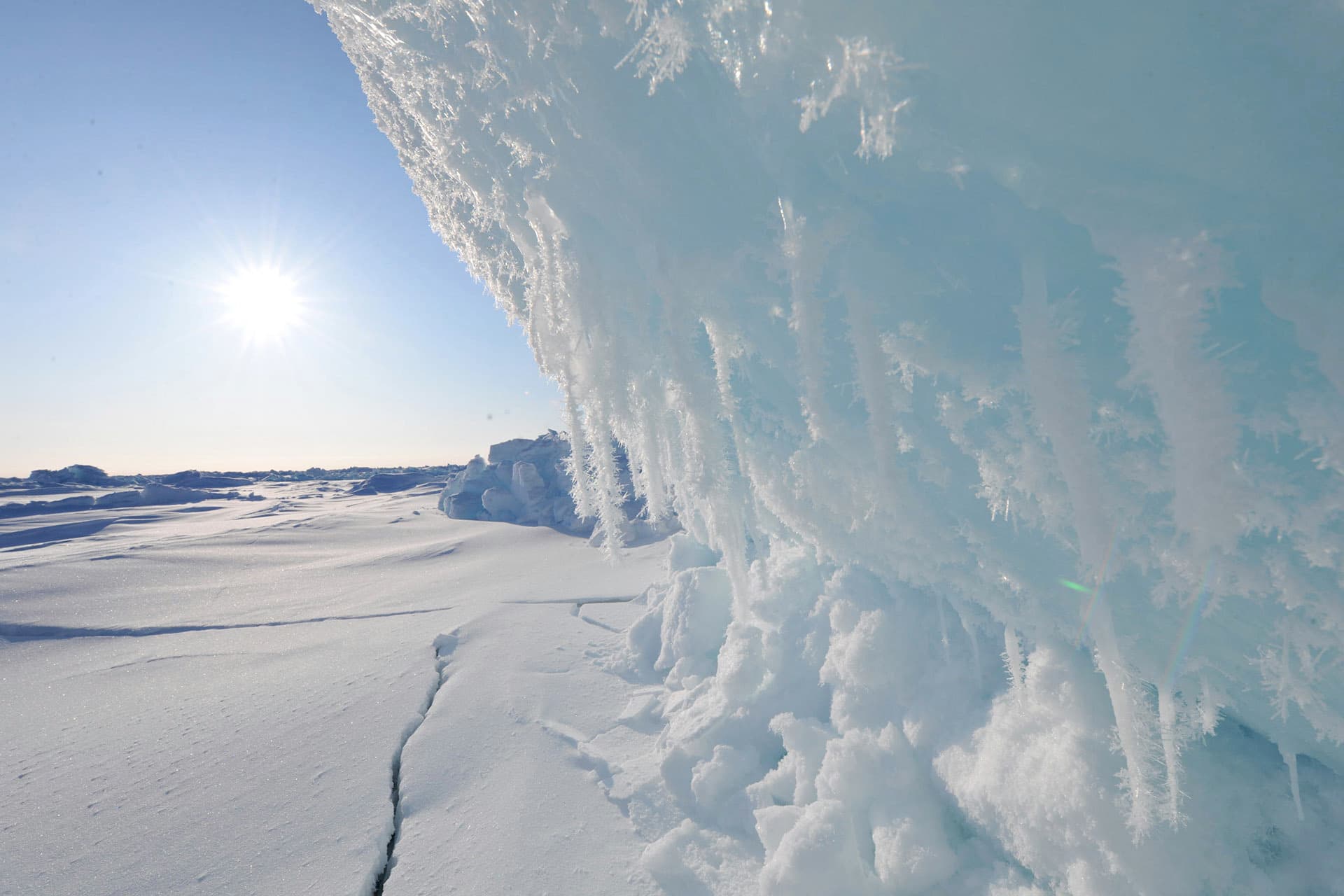How holey is ice?

The structure of sea ice is different than fresh water ice. Sea ice has many little channels in which microscopic plants, animals, and other organisms can live. Freshwater ice does not have these channels.
Ages 8+
(adult supervision)
10 minutes
(4+ hours preparation)
Part of:
AXA Ocean EducationWell in advance of the activity, you'll need to prepare the ice samples. This is easy to set up the night before to ensure your ice samples are completely frozen.
Activity steps
- Mix up some saltwater (32g of salt per 1 litre of distilled water).
- Then pour the saltwater into an ice tray or another freezer-safe container.
- Pour freshwater into an ice tray or another freezer-safe container.
- Freeze both samples until solid. This can take over 8 hours, especially for the saltwater ice.
- Place the ice cubes onto a shallow dish. Remember the saltwater ice cube represents sea ice and the freshwater ice cube is more like the ice on a lake or a pond.
- Squeeze drops of dye onto each cube and observe.
- Discuss the differences you can see between the two ice samples.
Reflection
People often think about well-known species such as the polar bear being affected by melting sea ice in the Arctic, but other species will be affected too. Animals, such as sea stars (starfish) and sea urchins, live on the bottom of the Arctic Ocean. They rely on food falling from above in the form of marine snow. It is called marine snow because it looks like falling snowflakes underwater, and is created by algae that live in the holes in the bottom of the sea ice. With sea ice, there is no marine snow, and without marine snow, there is much less food for sea stars and sea urchins.
Further ideas
Find out more about the different living things in the Arctic and how they are connected using the lesson What organisms live in the Arctic? from the Frozen Oceans at home for Ages 7-11 unit.
Safety guidance
- Participants should work in the centre of the table and clean up water immediately to avoid slips.
- Carry containers with two hands, carefully observing the surroundings.
Brought to you by
